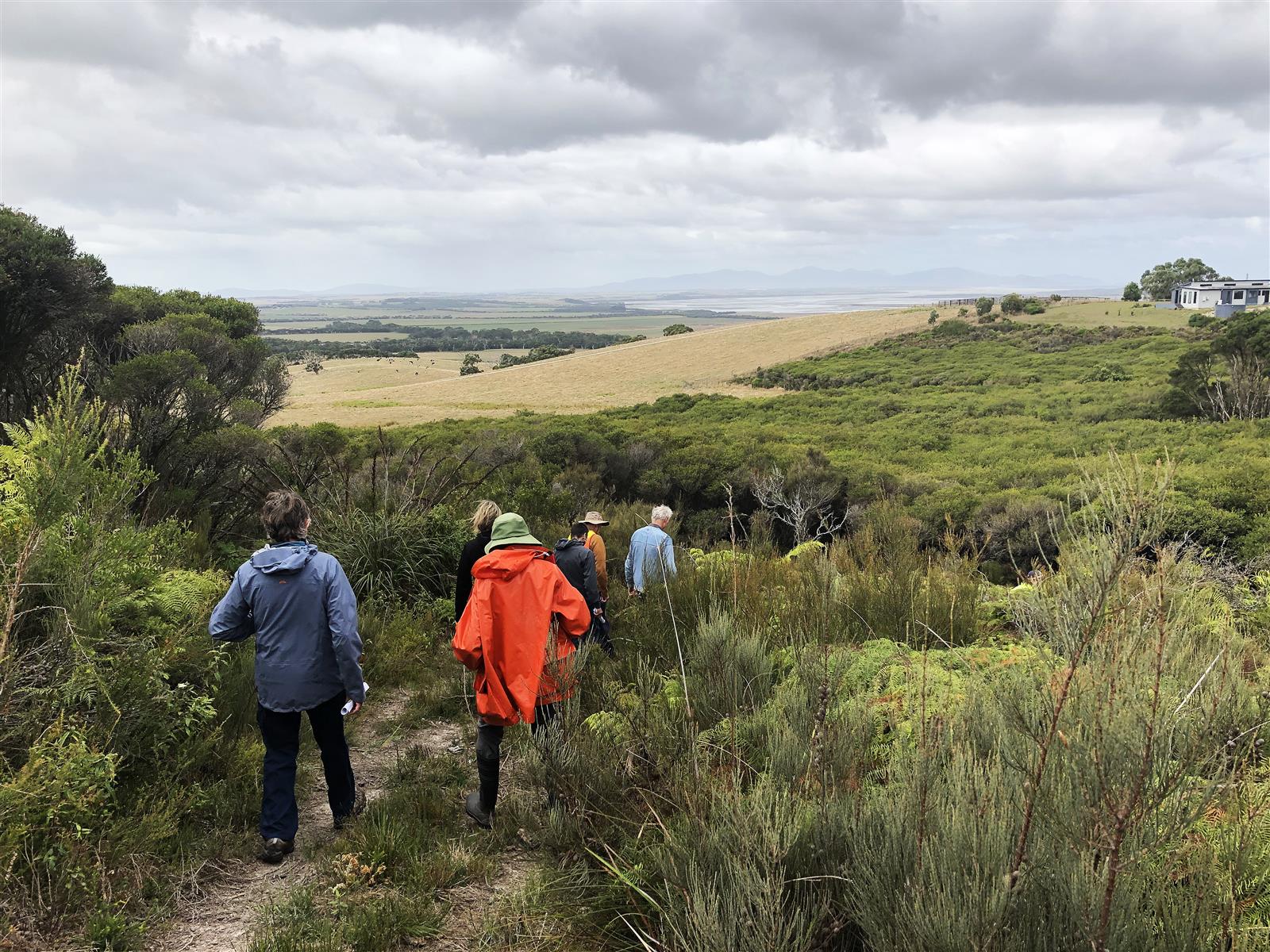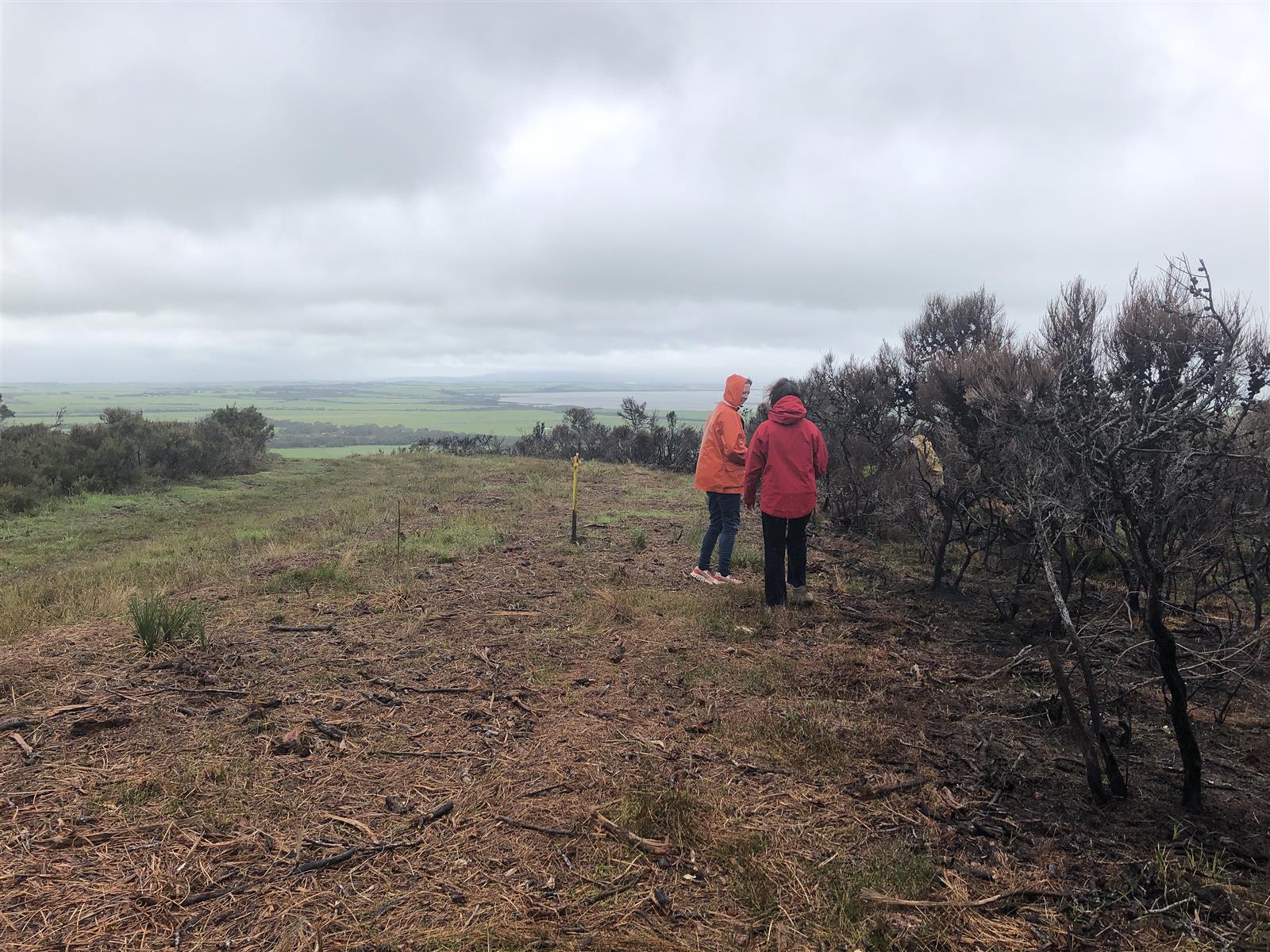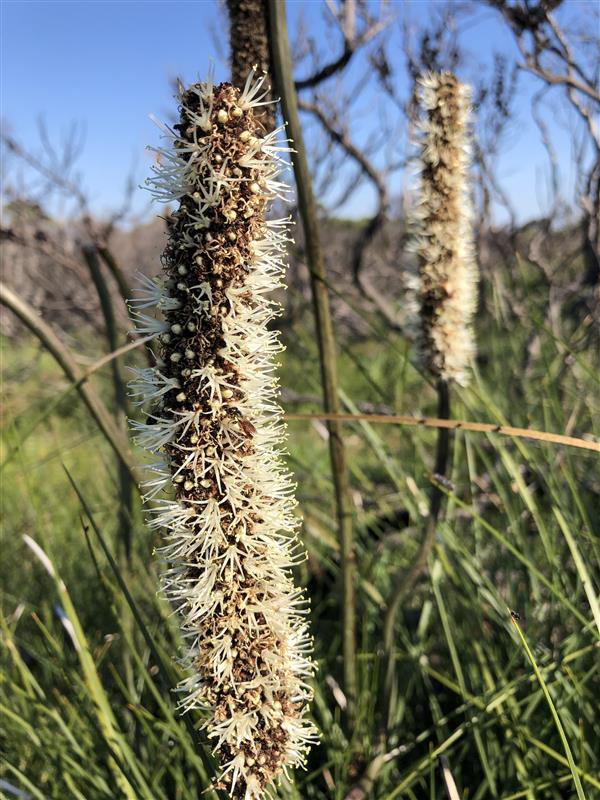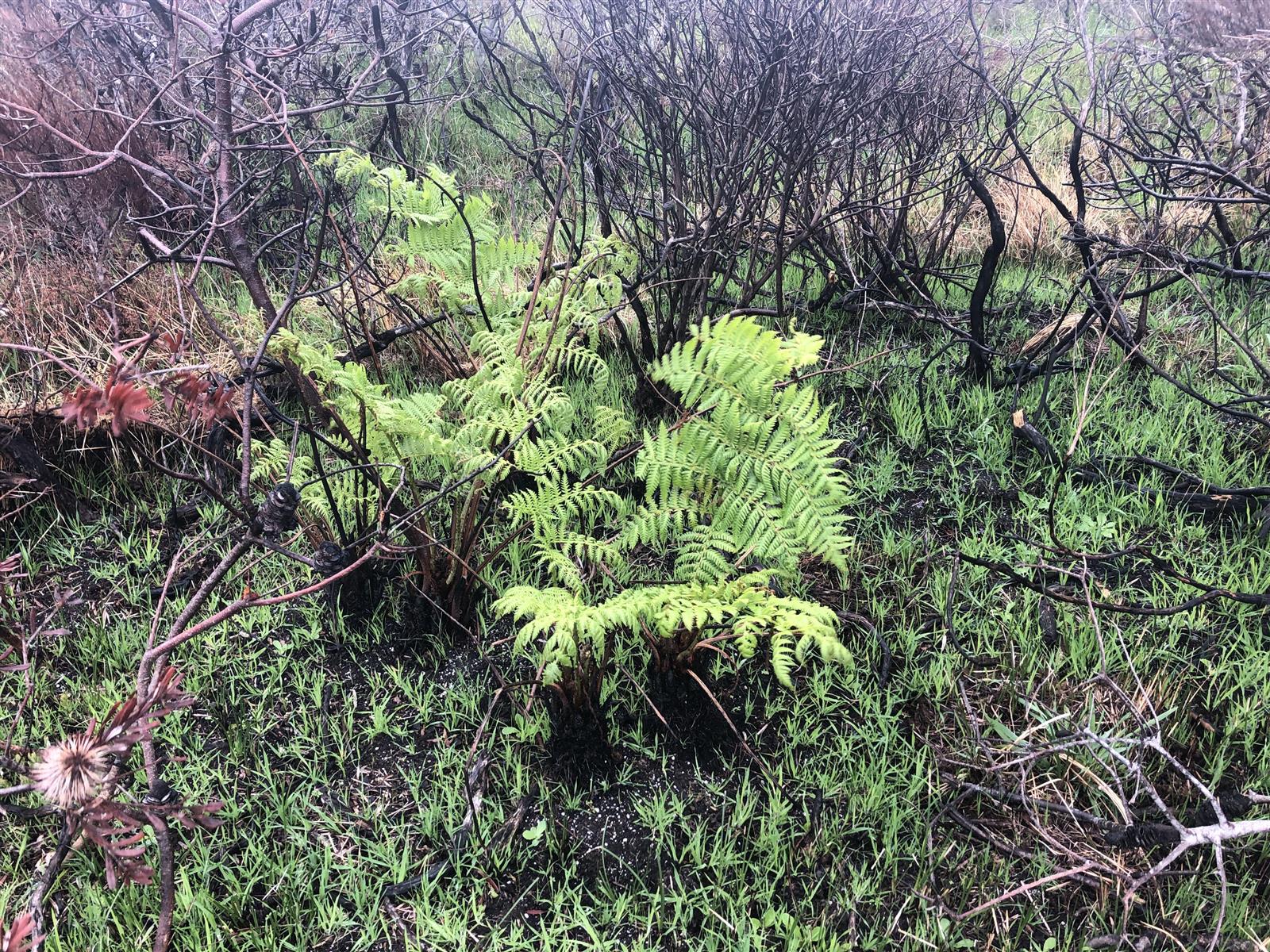 The land before the ecological burn
The land before the ecological burn
Standing on the ridge at Merran Wilde’s property just south of Fish Creek, the views of Wilsons Promontory are breathtaking.
Looking after the land has been a passion of Merran’s for decades, however she saw that regenerative fire was missing.
Equipped with advice from local ecologist Dr Mary Ellis, Merran began detailed consultation with CFA with the aim of conducting an ecological burn to regenerate long, unburnt and ageing flora on the property.
Ten years ago, Merran’s property was nominated as part of a CFA-led pilot project called Fire-Scape, where private landholders learned about the impacts planned burning and fire ecology can have in protecting important assets from bushfire. Australian plants have been shaped by fire for millennia, a practice First Nations people have done for tens of thousands of years.
The planned ecological burn was nominated as part of the statewide Joint Fuel Management Program (JFMP). Establishing and maintaining strong relationships proved crucial for the burn’s success. Merran and Dr Ellis collaborated with CFA’s Vegetation Management team, brigade volunteers and the local council during multiple site assessments, sharing insights about the property, conditions and objectives.
In preparation for the burn, many key stakeholders collaborated to share insights and experiences, secure permits and determine the resources needed. This included the local CFA volunteer complex planned burn operations officer (PBOO), brigade volunteers, FFMVic, Vegetation Management and Community Safety teams.
In early September 2022, volunteers from 11 brigades in District 9 joined forces to coordinate the burn. Merran’s relationships with her neighbours enabled CFA crews to access a dam and property boundaries for equipment setup. Due to the site’s dampness, hoses were laid out to avoid the risk of vehicles getting bogged and damaging the tracks, eliminating the need for vehicular access.
On the day of the burn, a light easterly wind meant changes were required to the burn prescription so that CFA crews, led by Ruby Fire Brigade volunteer and qualified PBOO Darren Hardacre, could set up an ignition pattern. Being adaptable and making the most of local conditions ensured the fire would burn away from neighbouring homes immediately adjacent to the burn area.
The 26 volunteers who set aside work and other commitments to attend the burn gained invaluable training and strengthened their skills.
Despite decades of experience, Darren said he always leaves a burn with new lessons learned – from reading the conditions and fire behaviour, to understanding more about ecology and how vegetation responds to different kinds of fire. Darren believes the ability for volunteers to undertake prescribed burns is important on many levels.
“Learning how to use fire to care for the environment is a great skill to develop, and listening to and learning from others is key,” Darren said.
A month on from the burn and there were already signs of ferns, grass trees and banksias regenerating. Merran showed off these early ecological changes at two Fire Ecology Engagement field days. The success of the burn ensures there will be opportunities to observe, listen and share lessons for years to come at this special place.
Merran’s next goal is to burn another small, adjacent block of heathy vegetation to promote a mosaic of regeneration and age classes on her property.
“The ability to look after and have meaningful outcomes for our environment should never be taken for granted,” Darren said. “We need to be stewards of the environment and lead by example.
“Training our volunteers in fire behaviour and successful outcomes provides essential lessons that help support and protect our communities.”
 After the burn
After the burn-
 After the burn
After the burn
-
 After the burn
After the burn
-
-
| Submitted by |
Sam Strong and Yazmin Craig, Safer Together program |